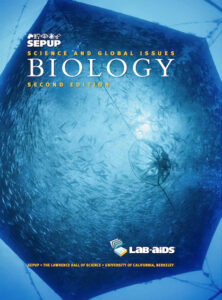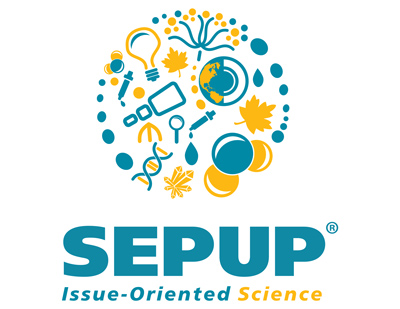SGI: Student Links
Student Activity Links
Select any unit from contents
Sustainability
Activity 1 Our Global Community
Activity 2 Life in Other Countries
Activity 4 Ecological Footprint
Activity 5 Jaffrey City’s Problem
Activity 6 Jaffrey City’s Master Plan
Activity 1
Our Global Community
United Nations Statistics Division
Activity 2
Life in Other Countries
United Nations Statistics Division
Activity 4
Ecological Footprint
Ecological Footprint Survey Questions UPDATE
Activity 5
Jaffrey City’s Problem
Activity 6
Jaffrey City’s Master Plan
^ top
Ecology: Living on Earth

Activity 1 Ecosystems and Change
Activity 4 Invasive Species
Activity 8 Cycles of Matter (Carbon Cycle)
Activity 9 The Photosynthesis and Cellular Respiration Shuffle
Activity 12 Too Much Life
Activity 14 Investigating Population Growth Rates
Activity 1
Ecosystems and Change
This 8 minute video clip shows how NASA is helping to monitor the health of Chesapeake Bay. It includes eutrophication and attempts to restore native oysters.
Activity 4
Invasive Species
This 8 minute video clip shows how NASA is helping to monitor the health of Chesapeake Bay. It includes eutrophication and attempts to restore native oysters.
Activity 8
Cycles of Matter (Carbon Cycle)
SEPUP Simulation: The Carbon Cycle
Click on the link above to go to the Carbon Cycle Simulation.
Activity 9
The Photosynthesis and Cellular Respiration Shuffle
SEPUP Simulation: Photosynthesis and Cellular Respiration Shuffle
Click on the link above to go to the Photosynthesis and Cellular Respiration Shuffle
Activity 12
Too Much Life
This 8 minute video clip shows how NASA is helping to monitor the health of Chesapeake Bay. It includes eutrophication and attempts to restore native oysters.
Activity 14
Investigating Population Growth Rates
Student Book Activity: “Population Estimation”
This activity, Activity 2.3 “Population Estimation,” is from SEPUP’s Science and Sustainability course and can be used as an extension for Activity 14, “Investigating Population Growth Rates.”
SEPUP Simulation: Avril Gulf Tuna Population Simulation
Click on the link above to go to the Avril Gulf Tuna Population Simulation.
^ top
Cell Biology: World Health
Activity 3 What is a Cell?
Activity 4 What Do Cells Do?
Activity 5 What do Specialized Cells do?
Activity 6 Cell Structure and Function
Activity 12 Photosynthesis and Cellular Respiration
Activity 13 The Cell Cycle
Activity 14 Stem Cell Differentiation
Activity 15 Stem Cell Research
Activity 16 HIV/AIDS Infection and Cell Organelles
Activity 17 Disease Interventions
Activity 3
What is a Cell?
Activity 4
What Do Cells Do?
SEPUP Simulation: What do Cells do?
Click on the link above to go to the SEPUP Simulation: What do Cells do?
Activity 5
What do Specialized Cells do?
SEPUP Simulation: What do Specialized Cells do?
Click on the link above to go to the SEPUP Simulation: What do Specialized Cells do?
Activity 6
Cell Structure and Function
Activity 12
Photosynthesis and Cellular Respiration
SEPUP Simulation: Photosynthesis and Cellular Respiration Simulation
Click on the link above to go to the Photosynthesis and Cellular Respiration Simulation (Stage 2 only).
Activity 13
The Cell Cycle
How Cell Biologists Can Contribute to Improving Cancer Outcomes
The Importance of Being Specified: Cell Fate Decisions and Their Role in Cell Biology
Cell Biology of Tissues and Tumors
Activity 14
Stem Cell Differentiation
The Importance of Being Specified: Cell Fate Decisions and Their Role in Cell Biology
Cell Biology of Tissues and Tumors
Activity 15
Stem Cell Research
The Importance of Being Specified: Cell Fate Decisions and Their Role in Cell Biology
Cell Biology of Tissues and Tumors
Activity 16
HIV/AIDS Infection and Cell Organelles
Simulation: Life Cycle of HIV, a Retrovirus
Click on the link above to launch the simulation in your browser. This is the simulation needed for the Activity 16.
From DISCOVER BIOLOGY, Third Edition by Michale L. Cain, Hans Damman, Robert A. Lue & Carol Kaesuk Loon. Copyright © 2002, 2000 by Sinauer Associates, Inc. Used by permission of W.W. Norton & Company, Inc.
Activity 17
Disease Interventions
Disease Control Priorities in Developing Countries
Centers for Disease Control and Prevention
^ top
Genetics: Feeding the World
Activity 3 Mitosis and Asexual Reproduction
Activity 12 DNA Replication
Activity 13 Meiosis and Sexual Reproduction
Activity 15 Evaluating Genetically Modified Organisms
Activity 16 Protein Synthesis: Transcription and Translation
Activity 3
Mitosis and Asexual Reproduction
SEPUP Simulation: Mitosis and Meiosis
Click on the link above to go to the Mitosis and Meiosis simulation.
Activity 12
DNA Replication
SEPUP Simulation: Investigating DNA Replication
Click on the link above to go to the Investigating DNA Replication simulation.
Activity 13
Meiosis and Sexual Reproduction
SEPUP Simulation: Mitosis and Meiosis
Click on the link above to go to the Mitosis and Meiosis simulation.
Activity 15
Evaluating Genetically Modified Organisms
Genetic Modification: Benefits, Risks, and Trade-offs
Insect Resistant Corn
Insect Resistance – Managing Corn Pests with Bt Corn
Effectiveness of Insect Resistant Plants – ‘Mounting Evidence’ of Bug-Resistant Corn Seen by EPA
Insect-resistant Crops Through Genetic Engineering – Extension Services, U.S. Department of Agriculture, Washington, D.C.
Herbicide-Resistant Soybeans
Herbicide Tolerance – Roundup Ready Soybeans
The Flavr Savr Tomato
“You Call That a Tomato?” – NY Times, June 24, 2013
Mistakes Shorten First Approved GMOs Shelf Life – Genetic Engineering and Biotechnology News, April 12, 2016
GM Rice
Bangladesh ‘endorses’ GM rice – BBC Article, January 2005
GM Fish
Genetically Engineered Salmon – Pew Initiative on Food and Biotechnology
Genetically Engineered Fish and Seafood – Congressional Research Service, The Library of Congress
Genetically Modified Fish: Promise or Problematic?
General Resources
What are GMOs?
News about GM food and crops
Resources to Help Construct a Scientific Poster
Design of Scientific Posters – by the University of Vermont
Designing Effective Posters – University of Kansas Medical Center
How to Create a Research Poster – New York University
Activity 16
Protein Synthesis: Transcription and Translation
SEPUP Simulation: Protein Synthesis
Click on the link above to go to the Protein Synthesis simulation.
^ top
Evolution: Maintaining Diversity
Activity 1 Biodiversity and Sustainability
Activity 7 The Phylogeny of Vertebrates
Activity 8 Studying Hominids
Activity 11 Natural Selection
Activity 12 The Genetic Basis of Adaptation
Activity 1
Biodiversity and Sustainability
Biodiversity Hotspots
BBC: Map of Biodiversity Hotspots
Activity 7
The Phylogeny of Vertebrates
Travels in the Great Tree of Life
View the video to find out how the information scientists gather from trees is used to address relevant issues.
Activity 8
Studying Hominids
National Geographic: Lucy’s Baby a Born Climber
What made us human? Part of the answer may rest on the shoulders of a 3.3-million-year-old toddler.
Activity 11
Natural Selection
SEPUP Simulation: Natural Selection
Click on the link above to go to the Natural Selection simulation. In this simulation, students work in groups of three instead of following SEPUP’s 4-2-1 cooperative learning model. The simulation lends itself to groups of three because students observe a model of the natural selection of three bird populations in Part A, and three bird populations in three separate areas in Part B.
Activity 12
The Genetic Basis of Adaptation
Howard Hughes Medical Institute: Pocket Mouse and Predation
^ top
Chemistry: Fueling the World
Activity 4
Fuel Combustion and Air Quality
Extension 2
International Air Quality
This site has current data for cities all over the world. Some of the linked sites provide annual data from past years as well.
Air Pollution in Mexico City
This site has overall information for Mexico City and other heavily polluted large cities.
^ top
Physics: Mitigating Risks from Waves
Activity 1 Predicting Earthquakes
Activity 7 History of Earthquakes, by State
Activity 9 Snell’s Law
Activity 16 Spectroscopy and Air pollution
Activity 18 Nuclear Power Plants, by State
Activity 1
Predicting Earthquakes
PBS Online News Hour: Predicting Earthquakes
USGS: 100% Chance of an Earthquake
Pacific Northwest Seismograph Network: Earthquake Prediction
Activity 7
History of Earthquakes, by State
US Earthquake Information by State
Activity 9
Snell’s Law
Refraction and Reflection Applet
HyperPhysics: Reflection and Refraction of Light
Activity 16
Spectroscopy and Air pollution
European Space Agency: Global air pollution map
Centre for Earth Observation Instrumentation: UV/Visible Compact Spectrometers
Activity 18
Nuclear Power Plants, by State
U.S. Nuclear Regulatory Commission
Nuclear Power Plants in the United States
^ top
Pilot Test of Electricity: Global Energy and Power
Activities
Measuring Efficiency
Renewable Energy
Storing Electrical Energy
Discharging Capacitors
Electric Potential Difference
Electromagnetic Induction
Powering Kapikua Island
Measuring Efficiency
Click on the following photos to see how to set up the water pump and the water reservoir:
Renewable Energy
Click on the following links to obtain additional resources for this activity:
Biomass Resources Map
Solar Resource Map
Geothermal Resources Map
Hydroelectric Resources Map
Wind Resources Map
Visualizing the U.S. Electric Grid
Analysis Question 4: Geothermal Potential Map
Analysis Question 4: Electricity Use at Night
Storing Electrical Energy
Click on the following photos to see how to set up the solar cell and the motor:
Discharging Capacitors
Click on the following photo to see how to set up the components in Procedure Step 2:
Electric Potential Difference
PhET Simulation: “Charges and Fields”
Electromagnetic Induction
Powering Kapikua Island
Student Sheet: “Map of Kapikua Island”
^ top

